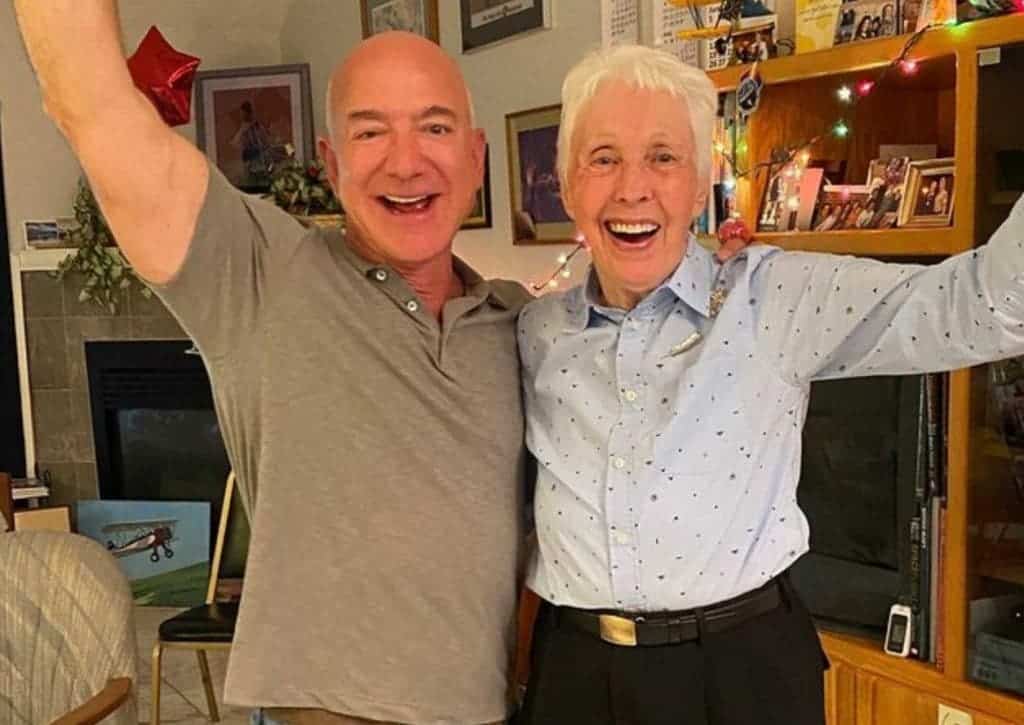Female pilot Wally Funk wanted to be an astronaut in the earliest days of spaceflight. But she was denied the job in the 1960s because of her gender. Now, she’ll finally have the opportunity to fulfill her dream of going to space.

Amazon founder Jeff Bezos announced on Instagram that Funk will be part of a four-person crew that will be launched into space by Blue Origin during a 10-minute flight later this month. This will make Funk, 82-years-old, the oldest person to ever travel to space, after the late John Glenn set the record at age 77 when boarding the Discovery shuttle.
“I like to do things that nobody’s ever done. I didn’t think I’d ever get to go up” Funk said in a video. “I can’t tell people that are watching how fabulous I feel to be picked by Blue Origin to go on this trip.”
Funk grew up in the western United States in Taos, New Mexico. She was passionate about aviation from an early age, taking her first flying lessons at age nine. She wasn’t allowed to take mechanics at high school as the subject was still reserved for boys. Still, she obtained her pilot license and graduated from Oklahoma State University’s aviation program.
Funk was one of the Mercury 13 pilots, a program in 1961 created to train women for NASA’s astronaut program. She graduated third in her class after taking rigorous mental and physical tests. But the program was abruptly canceled when the US government decided women shouldn’t use military facilities needed for space training. Her dreams — along with the dreams of all her colleagues — were shattered.
None of the women from program ever made it into space. But now, Funk will have the opportunity to do so on 20 July. She’ll be part of a four-person crew launched into space on the New Shepard rocket. They will experience a few minutes of weightlessness and marvel at the planet’s curvature before returning to Earth.

Funk applied to become an astronaut at NASA on four occasions but was rejected every time. One of the reasons given was that she didn’t have an engineering degree and had not completed the flight program on a military fighter jet, which couldn’t be done by women at the time. She was essentially rejected because of her gender.
Nevertheless, Funk has never lost her love of flying. “I’ve been flying forever and I have 19,600 flying hours,” she said, also citing her experience teaching more than 3,000 people to fly. She recalled the disappointment when NASA’s program was shut down. “They told me I had completed the work faster than any of the guys,” she said.
Bezos will also be a passenger on the flight, along with his brother Mark and the as-yet-unnamed buyer of a seat auctioned off in June. Bezos will be stepping down as chief executive of Amazon on 5 July, dedicating more of his time to his space endeavors. He’s been vying with billionaires Elon Musk and Richard Branson to become the first to travel into space on privately owned rockets.
Branson is set to fly on July 11th, according to a recent announcement by space tourism company Virgin Galactic – which means he’ll be flying before Bezos. “I’ve always been a dreamer. My mum taught me t never give and reach for the stars. It’s time to turn that dream into a reality abord the next Virgin Galactic spaceflight,” Branson tweeted.






